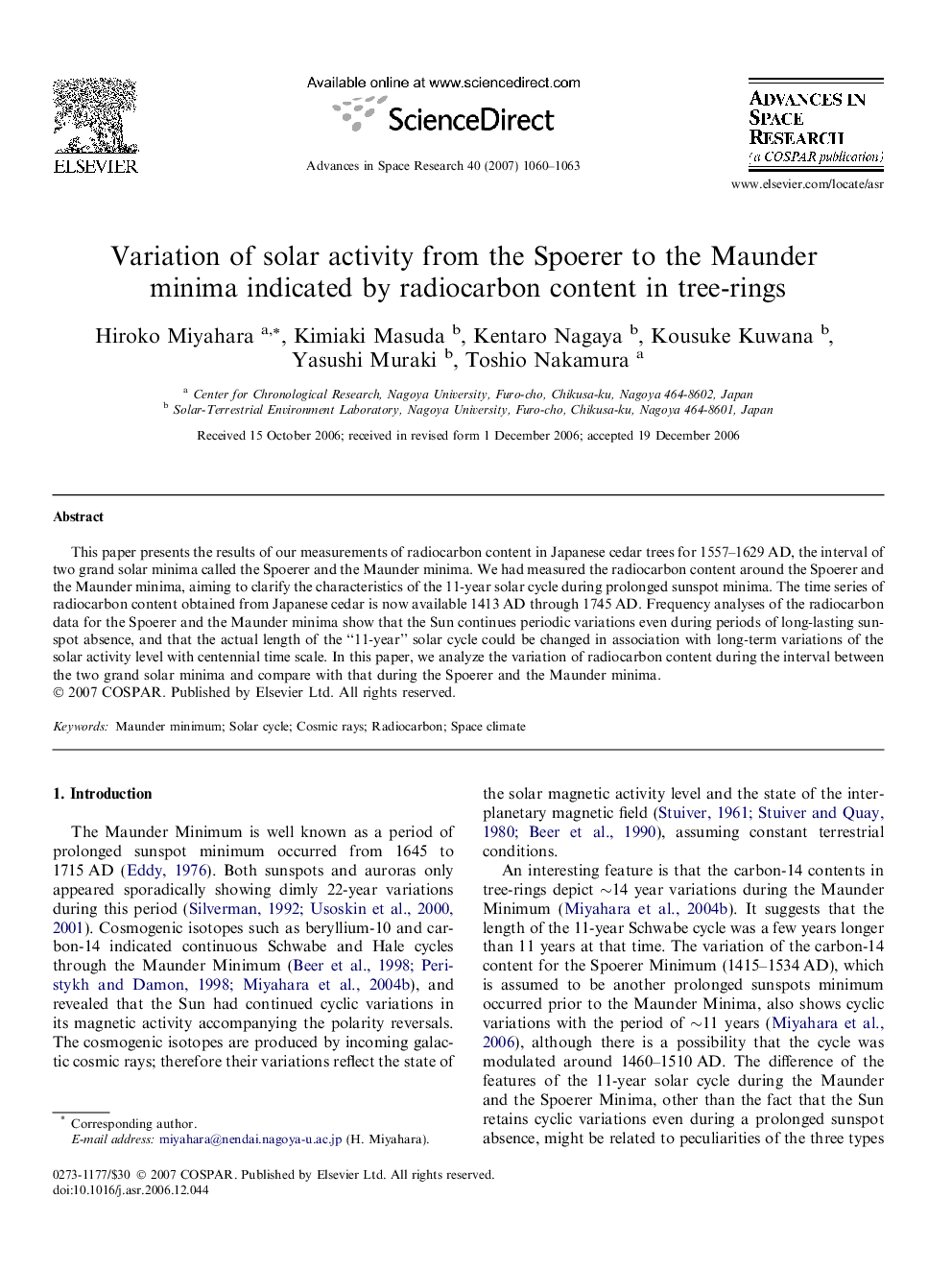| Article ID | Journal | Published Year | Pages | File Type |
|---|---|---|---|---|
| 1767046 | Advances in Space Research | 2007 | 4 Pages |
This paper presents the results of our measurements of radiocarbon content in Japanese cedar trees for 1557–1629 AD, the interval of two grand solar minima called the Spoerer and the Maunder minima. We had measured the radiocarbon content around the Spoerer and the Maunder minima, aiming to clarify the characteristics of the 11-year solar cycle during prolonged sunspot minima. The time series of radiocarbon content obtained from Japanese cedar is now available 1413 AD through 1745 AD. Frequency analyses of the radiocarbon data for the Spoerer and the Maunder minima show that the Sun continues periodic variations even during periods of long-lasting sunspot absence, and that the actual length of the “11-year” solar cycle could be changed in association with long-term variations of the solar activity level with centennial time scale. In this paper, we analyze the variation of radiocarbon content during the interval between the two grand solar minima and compare with that during the Spoerer and the Maunder minima.
